УДК 638.158
![]() Значение пчел в жизни человека и в целом планеты Земля трудно переоценить. Пчелы, отдавая все лучшее (мед, пыльцу, пергу, воск, прополис) человеку, получают в ответ от него удар за ударом.
Значение пчел в жизни человека и в целом планеты Земля трудно переоценить. Пчелы, отдавая все лучшее (мед, пыльцу, пергу, воск, прополис) человеку, получают в ответ от него удар за ударом.
Незаслуженно забытое государством пчеловодство в России фактически уже не существует как отрасль народного хозяйства. Пчелы опыляют сельскохозяйственные культуры, лечат человека и при этом сами гибнут год от года во все ускоряющемся темпе. Что за парадокс? Гибель семей пчел в России связана с комплексом причин.
Так как в нашей стране должным образом не соблюдается система взаимоотношений между службой защиты растений и пчеловодами, обработки полей, садов и лесов часто производятся во время активного лёта пчел, без предварительного информирования об этом местных пчеловодов. В результате наблюдаются массовые отравления и гибель летных пчел, часто пчелы несут в ульи нектар и пыльцу, загрязненные пестицидами, которые впоследствии в зимний период становятся причиной гибели семей пчел.
Ключевые слова: пчелы, пестициды, ядохимикаты, неоникотиноиды, обработки, отравления, изоляция, рапс, ГМО.
Р.Т.КЛОЧКО, С.Н.ЛУГАНСКИЙ, А.В.БЛИНОВ
ФГБНУ «Всероссийский научно-исследовательский
институт ветеринарной санитарии, гигиены и экологии»
e-mail:
ЛИТЕРАТУРА
1. Aliouane Y., Adessalam K., El Hassani AK, Gary V., Armengaud C., Lambin M., Gauthier M. (2009) Subchronic exposure of honeybees to sublethal doses of pesticides: effect on behavior // Environ Toxicol Chem. — № 28.
2. Desneux N., Decourtye A., Delpuech J.M. (2007) The sublethal effects of pesticides on beneficial arthropods // Annu Rev Entomol. — № 52.
3. Fischer D., Moriarty T. (2011) Pesticide risk assessment for pollinators: summary of a SETAC Pellston Workshop. Society of Environmental Toxicology and Chemistry (SETAC), Pensacola.
4. Girolami V., Mazzon L., Squartini A., Mori N., Marzaro M., Di Bernardo A., Greatti M., Giorio C., Tapparo A. (2009) Translocation of neonicotinoid insecticides from coated seeds to seedling guttation drops: a novel way of intoxication for bees // J Econ Entomol. — 2009. — № 102.
5. Hopwood J., Vaughan M., Shepherd M., Biddinger D., Mader E. Scott Hoffman Black, Mazzacano C. Are Neonicotinoids Killing bees? A Reviev of Research into the Effects of Neonicotinoid Insecticides on Bees, with Recommendations for Action. — 2012.
6. Mullin C.A., Frazier M., Frazier J.L., Ashcraft S., Simonds R., VanEngelsdorp D., Pettis J.S. (2010) High levels of miticides and agrochemicals in North American apiaries: implications for honey bee health. PLoS ONE 5:e9754.
СВЕДЕНИЯ ОБ АВТОРАХ:
Клочко Раиса Тимофеевна, канд. биол. наук, e-mail:
Луганский Сергей Николаевич, канд. биол. наук, e-mail:
Блинов Алексей Валерьевич, канд. вет. наук, e-mail:
ONE MORE TIME ON BEE DEATH
R.T.Klochko, S.N.Lugandkiy, A.V.Blinov
As in Russia there is very little coordination between beekeepers and the agency of plant protection, the latter often treat fields, gardens, and forests with chemical substances during the time of bee activity and without informing the local beekeepers. As a result, numerous bees are poisoned and die; often nectar and pollen are contaminated with pesticides, leading to the death of entire colonies during the winter period if they are brought into the hive.
Keywords: bees, pesticides, toxic pesticides, neonicotinoid, processing, toxicity, isolation, rape, genetically modified organisms.

Требования к технологии содержания семей…
июнь 16, 2020
Электрообогрев (5)
фев 18, 2016
Влияние температуры на развитие матки от…
фев 13, 2023
Нужна ли сертификация меда?…
нояб 13, 2014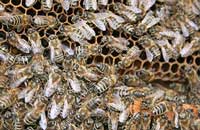
Вирозы пчел (5)
фев 13, 2015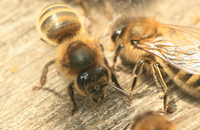
Резистентность бактерий у пчел…
март 19, 2017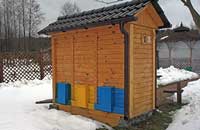
Лечение ульевым воздухом…
фев 1, 2015
Заслонка для летков
март 5, 2018
Ройливость пчел типа «Приокский»…
июль 17, 2014
Декоративные кустарники-медоносы…
янв 23, 2020
Породный состав пчел горно-лесной зоны Б…
июль 24, 2014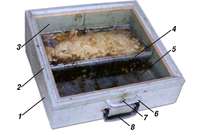
Моя солнечная воскотопка…
фев 24, 2022




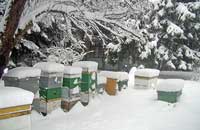
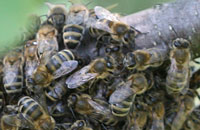








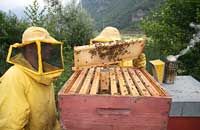
 Адрес редакции журнала "Пчеловодство":
Адрес редакции журнала "Пчеловодство":



